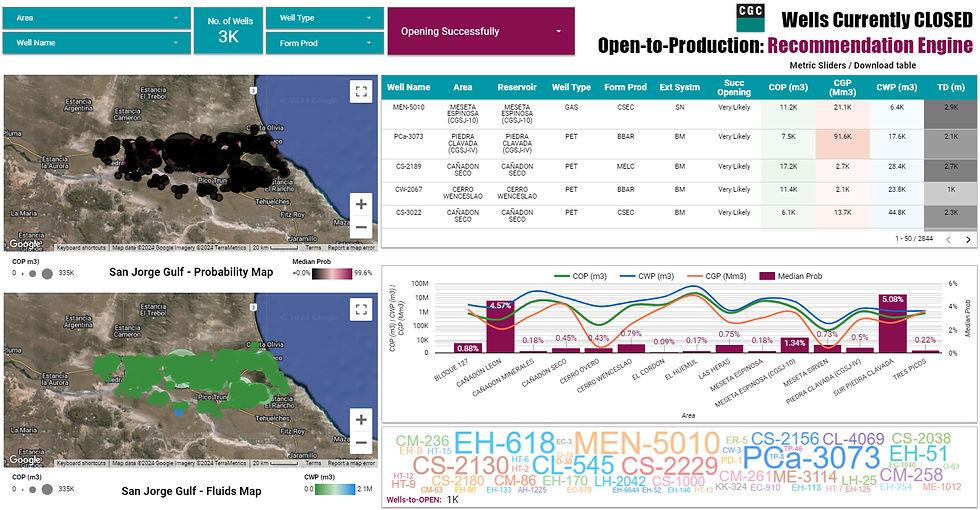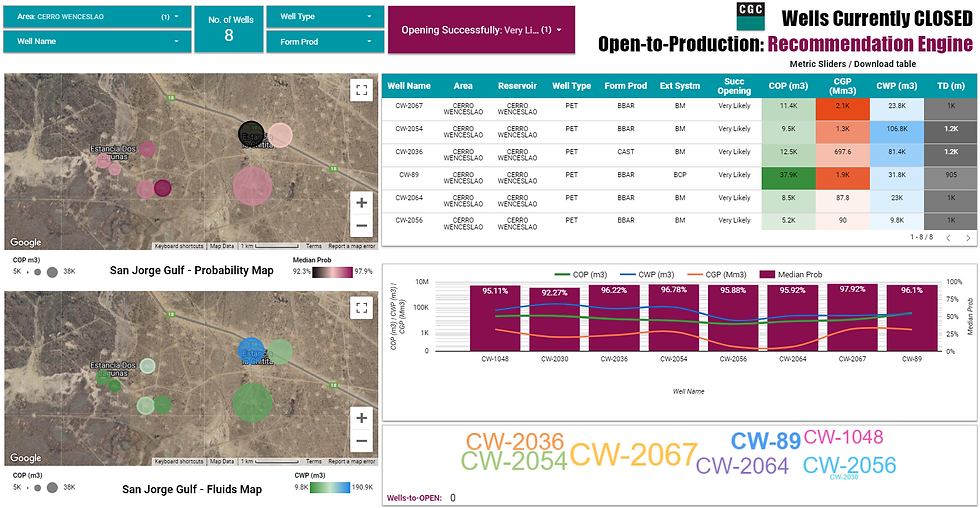Opening wells for production in mature hydrocarbon fields with high water cuts: a collaborative recommendation engine (Part I)
- Angel Solutions (SDG)

- Jul 26, 2024
- 2 min read
Updated: Jul 2
The oil and gas industry is currently facing challenges due to low prices and increasing environmentalist and globalist agendas. Small to medium O&G companies need to optimize resources and budgets to remain competitive, especially those operating in high water cut areas like the Gulf San Jorge in Chubut Province, Argentina.
There are billions of barrels of oil, valued at trillions of dollars, trapped underground in mature fields globally. Data analytics can efficiently help to extract this resource at the lowest cost, providing valuable insights from mostly underutilized data quickly.

Following a previous use case, this post will discuss the recommendation engine provided by the cloud-based end-to-end analytic solution already introduced. The system utilizes advanced data preparation, Auto Machine Learning (AutoML), and advanced visualization techniques.
The image below illustrates the solution's Recommendation System, which utilizes specialized algorithms and machine learning tools. Basically, there are three type of recommender systems; we will only considered two of them:
The collaborative filtering method is based on gathering and analyzing data on the behavior of the closed wells. This includes the well's production and other related data to predict how they will behave if they are intervened and reopened.
Content-based recommendation engines, on the other hand, are based on the description of a well or area or reservoir and a profile of its characteristics. In this recommendation system, the objects or items are described using keywords, namely, the name's area or reservoir.
Here, we are utilizing a collaborative filter (1) in the engine shown in the image below. In the upcoming post of this series, we will explore a use case for a content-based recommendation engine (2).

As shown above, the engine includes maps that display the probabilities of well openings and cumulative fluids productions, a table with relevant well features, a word cloud for easy visualization, and drop-down filters to segment and analyze the data. It also features a combo chart to visually and quantitatively compare fluids productions and opening successfully probabilities by Area and formation Production to individual wells. With just a few clicks, the user can extract actionable insights, such as identifying well candidates for water shut-off and conformance (water control), or other enhancement interventions.
For example, the image below shows the Top-8 "Very likely" (Opening Successfully) wells in the CERRO WENCESLAO reservoir (location above). According to the combo chart, wells CW-1048 and CW-89 would be suitable for performing water shut-off or other production enhancement (water control) procedures if they were eventually opened. The visualizations can help in further narrowing down the list and refining the selection of wells (remove well C-2030, for instance).

Insights like these are crucial for allocating resources, optimizing the operator's investment budget, and increasing profit. Would you like to learn more about our services and solutions? Contact us now!
DATAMATE/DataRobot, in partnership with Angel Solutions (SDG) and its trusted partners Geoloil Petrophysics and MineaOil Ltd, comprises highly trained professionals; and they are prepared and equipped with the best AI-powered platform and tools to effectively provide solutions for your data project needs, regardless of type or volume.
Feel free to reach out to Angel Solutions (SDG) directly or through our partners for prompt and reliable assistance.



Comments